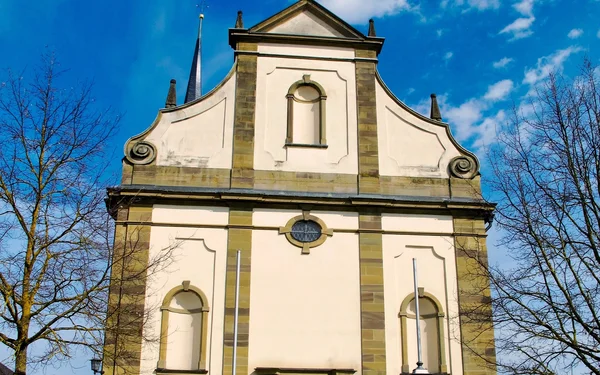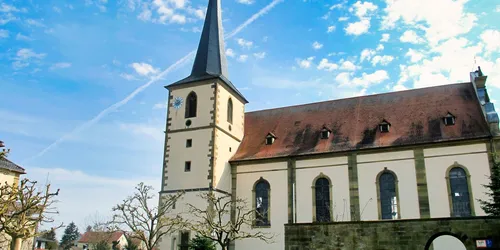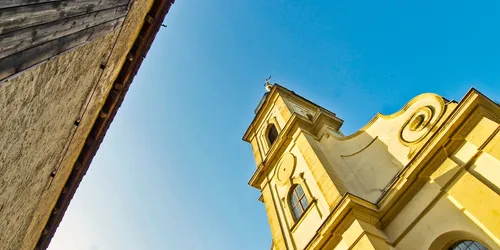Village splendour in the west of Schweinfurt
How about a delightful cycle tour along small watercourses? Trace the work of Balthasar Neumann in the Franconian villages. This tour perfectly combines nature and culture!
Waigolshausen
3 h
35 km
Who remembers the last 50 Deutschmark note? On the front is the portrait of a man with a curly wig, on the reverse a magnificent staircase, the interior view of the Würzburg Residence. It has been a World Heritage Site since 1981. It was designed by the architect, engineer and master builder Balthasar Neumann.
In the early 18th century, Balthasar Neumann was the prince-bishop's building director, later senior building director in Würzburg, and is considered to be the master of the Baroque style. He received commissions from Bamberg to Trier and from Cologne to Constance. Around 100 important buildings of all kinds can be traced back to his work.
On this scenic cycle tour along small watercourses, you can trace his masterful work in the pretty Franconian villages west of Schweinfurt.
A cycle tour for nature lovers, culture vultures and explorers
Arrive relaxed and hire bikes from local hire companies. The capacity for taking bikes on trains is limited and, depending on capacity utilisation, it is not possible to guarantee that you will be able to take your own bike with you.
Start and end station
Start station
Bahnhof Waigolshausen
5 tour steps
35 km / 3 Stunden
End station
Bahnhof Oberwerrn
Our tip: Please make sure to check your train connection and the expected capacity before you start your journey.
Schedule
Tour starts on Bahnhof Waigolshausen
Direction
Waigolshausen Bahnhofstr. 1
97534
Waigolshausen
Direction
Balthasar-Neumann-Platz 1
97440
Werneck
Direction
Marktplatz 20
97440
Werneck
Direction
An der Hauptstraße 5
97535
Wasserlosen
Direction
Kirchgasse
97502
Euerbach



















